The Land of the Rising Sun. A vast nation with thousands of years worth of history, spanning multiple eras and dynasties. Of its 34 province-level administrative divisions, which comprises 23 provinces, Yunnan is known to be one of the most culturally diverse and historically rich provinces in all of China. Out of its 8 prefecture-level cities, I had the pleasure of visiting Lijiang and Kunming. Below is my account of this fantastic trip that I will treasure for years to come.
I, along with a group of colleagues from various media corporations as the Maldives Media Delegation, 16 to be precise, left for Yunnan on 22nd July. The flight was a cool 5 ½ hours, with us landing in Kunming, the capital city of Yunnan. At the airport, we were met by our handlers Ms. Yang and Ms. Zhang, employees of the Ministry of Foreign Affairs of the People’s Republic of China.
Kunming was set to be at the latter half of our trip and so, we boarded a bus to get to a train station, which took us 40 minutes. A 3 ½ hour train ride later, we had arrived in Lijiang where we would spend the first two days of our four day trip.
Lijiang: A city that holds time capsules to the past
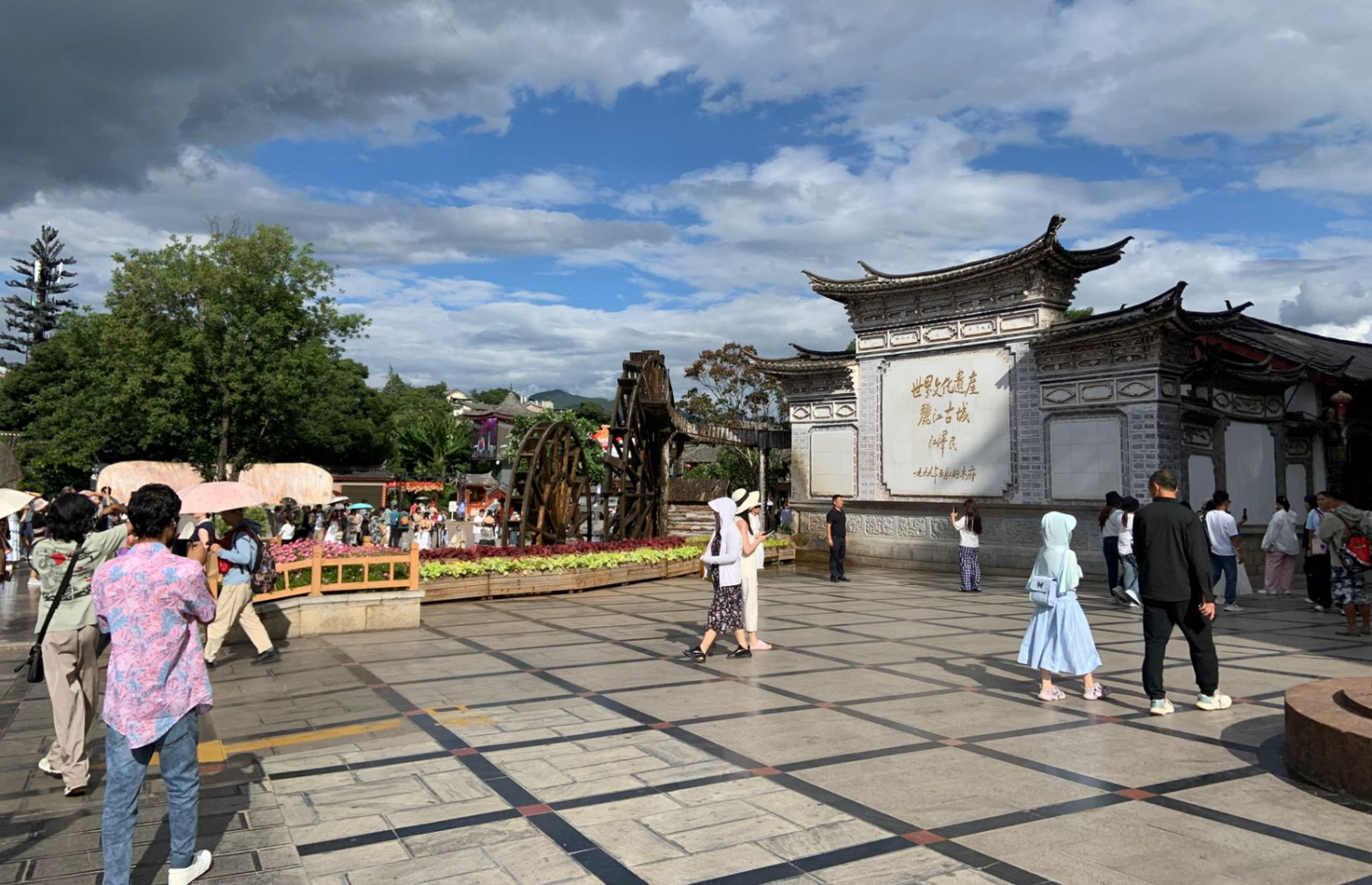
Once we arrived in Lijiang, we were taken to a restaurant for a quick lunch. We were showered with local cuisine spanning variations of beef, pecking duck, local vegetable dishes, desserts and more, with their local tea served to us to wash everything down. Such a harmonious blend of tastes graced the table, and I wasted no time in trying almost everything that was given to us.
After an amazing first lunch in this exciting new environment, we went and got checked into the Lijiang No.1 Hotel, a quaint but homey hotel that was split into three buildings. I was given quite a comfortable room at the building in the back with a 5th floor view of the property.
The drive to the hotel from the train station was a sight to behold. Such greenery, cleanliness and discipline on the road was refreshing to see, with our bus turning heads to take a look inside. Curious looks, often followed by a smile when I would smile upon eye contact. Even as we were on the way to the train station in Kunming, little kids were smiling, waving and saying hello in their native tongue, exclaiming “nǐ hǎo, nǐ hǎo!” in an excited tone.
Once we had checked in to the hotel and got settled in, we were taken to Lijiang Old Town, which you will read about in a minute or so.
Lijiang is well known for their ethnic diversity, spanning 12 indigenous minority ethnic groups, with a total of 22 different minorities. With a total population of 1.25 million, the Naxi ethnic group has the most people, totaling about 233,700 people (according to 2023 year-end statistics: Yunnan Exploration). The city is located 2,400 meters above sea level, and sees around 20 million tourists each year, as was explained by our entertaining, friendly and informative tour guide to Lijiang, Bruce.
He had donned traditional Naxi garb to greet us, a well tailored black dress with a decorative red sash worn around his waist. He went on to tell us about how Lijiang became increasingly accessible and popular post-2000, due to the accessibility increase. The city had also experienced a rather troubling earthquake in 1999, which explains why the city has no high rises as a safety measure.
Lijiang is home to a snow capped mountain of immense beauty known as the Jade Dragon Snow Mountain. It remains snow capped throughout the year, with summer dwindling the snow by a considerable amount and then returning to its former glory when winter comes around. An absolutely gorgeous sight to see, the peak of Jade Dragon Snow Mountain rarely can be seen, but when the clouds part, it’s truly a sight to behold.
Our media teams were taken to many wonderful places in this city, starting with the Old Town of Lijiang.
Old Town of Lijiang: Step into a land preserved in time
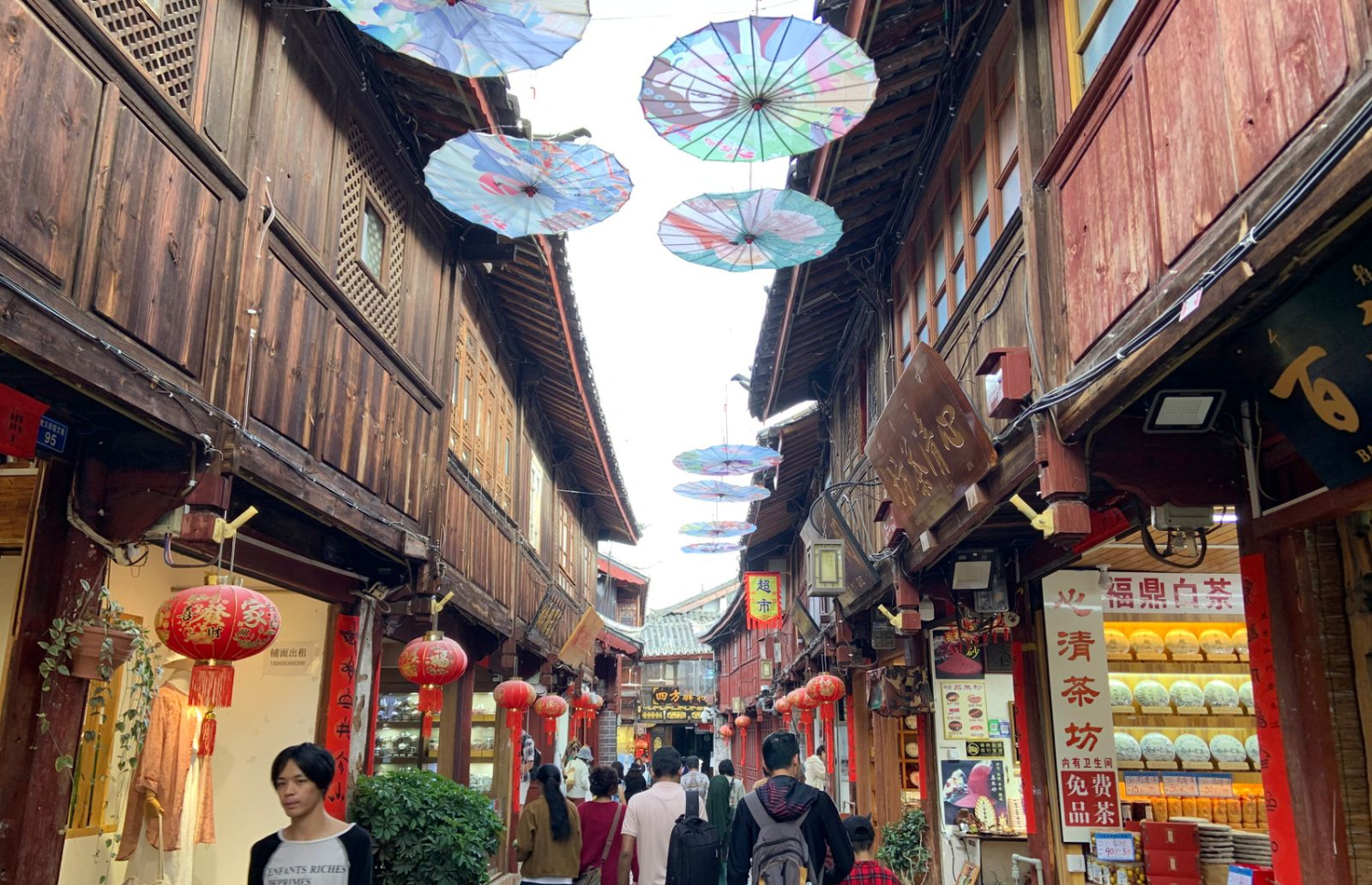
The Old Town of Lijiang, or Lijiang Old Town is an older part of the city that has been frozen in time and preserved since days of old, and has been repurposed into a tourist attraction that showcases their proud culture through song, dance, teas, coffees, food and more.
Multiple timber-framed, tile-roofed, two-storeyed houses adorn the streets, where people from Lijiang sell local artisanal works and more. The area is graced with a population of 200,000 people, which was described by Bruce as a small population in terms of China as a whole. We were taken to the Naxi Dongba Hieroglyph Experience Hall, a place that captures the Dongba culture of the Naxi people.
There, we were shown their very own hieroglyphic writing system, not akin to, but much like the famous Egyptian hieroglyphs. They have hundreds of characters which depict specific words and descriptions, allowing for a unique writing system like no other.
The guide at the experience hall talked about and showed their depiction of the 12 zodiac signs, with various animals and elements being linked to each other in various ways. Animals such as a frog, a rabbit and other animals were depicted, with elements such as water, fire, earth, etc, having been drawn in great detail and great passion, symbolizing just a small part of Chinese feng shui. Sadly, we weren’t allowed to photographically document the trip to the experience hall, as they had asked us not to out of respect to the drawings and depictions. It was still an informative and eye opening experience that will remain with me for quite a while.
After experiencing the experience hall (no pun intended), we set off to have dinner to end the day with a magnificent feast at a hotpot hall.
Unbelievably long tables that stretch a few dozen feet were decorated with multiple hotpots, raw meats, vegetables and of course the local tea named Pu’er tea. We were treated to a cultural show where dancers displayed their dancing ability while singing Naxi tunes, as a variety of drums thundered through the hall spanning multiple performances.
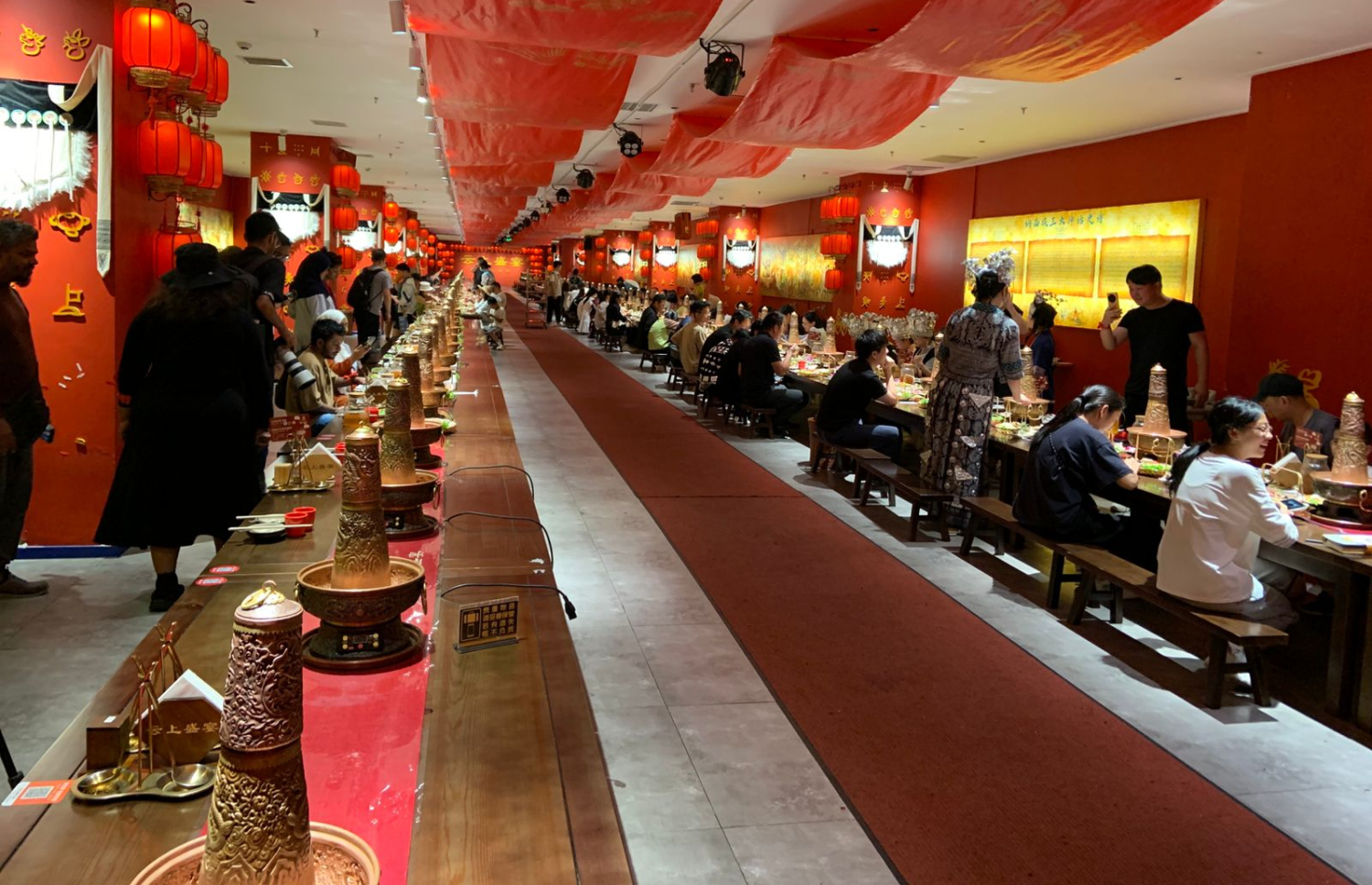
Many a story was told that night through their performances, with one such performance being a short love story between two souls meeting, escalating and ending in what looked to be a rendition of a traditional Naxi wedding. A remarkable end to a fantastic first day.
Yuhu Village: A millennia-old village that stays true to its roots
Day Two started quite early, with a regular hotel breakfast to get us on our way. Bruce ushered us onto our tour bus and we took off early in the morning to a place called Yuhu Village, with our memorable tour guide showering us with little nuggets of knowledge throughout the ride. A half-an-hour ride saw us steadily climb in altitude until we reached the outskirts of the village which sits 2,700 metres above sea level.
I get off the bus and am immediately greeted by the cold, which is quite appealing to a tropical lad such as myself. Each inhale was an oxygen-rich breath of fresh air due to the cloud-covered mountains encased by trees, and each exhale was followed by mist, confirming that this is the coldest region I’ve ever been to. My hoodie was enough to offer comfort from the cold, which wasn’t as unbearable as I may be making it out to be. It was just right.
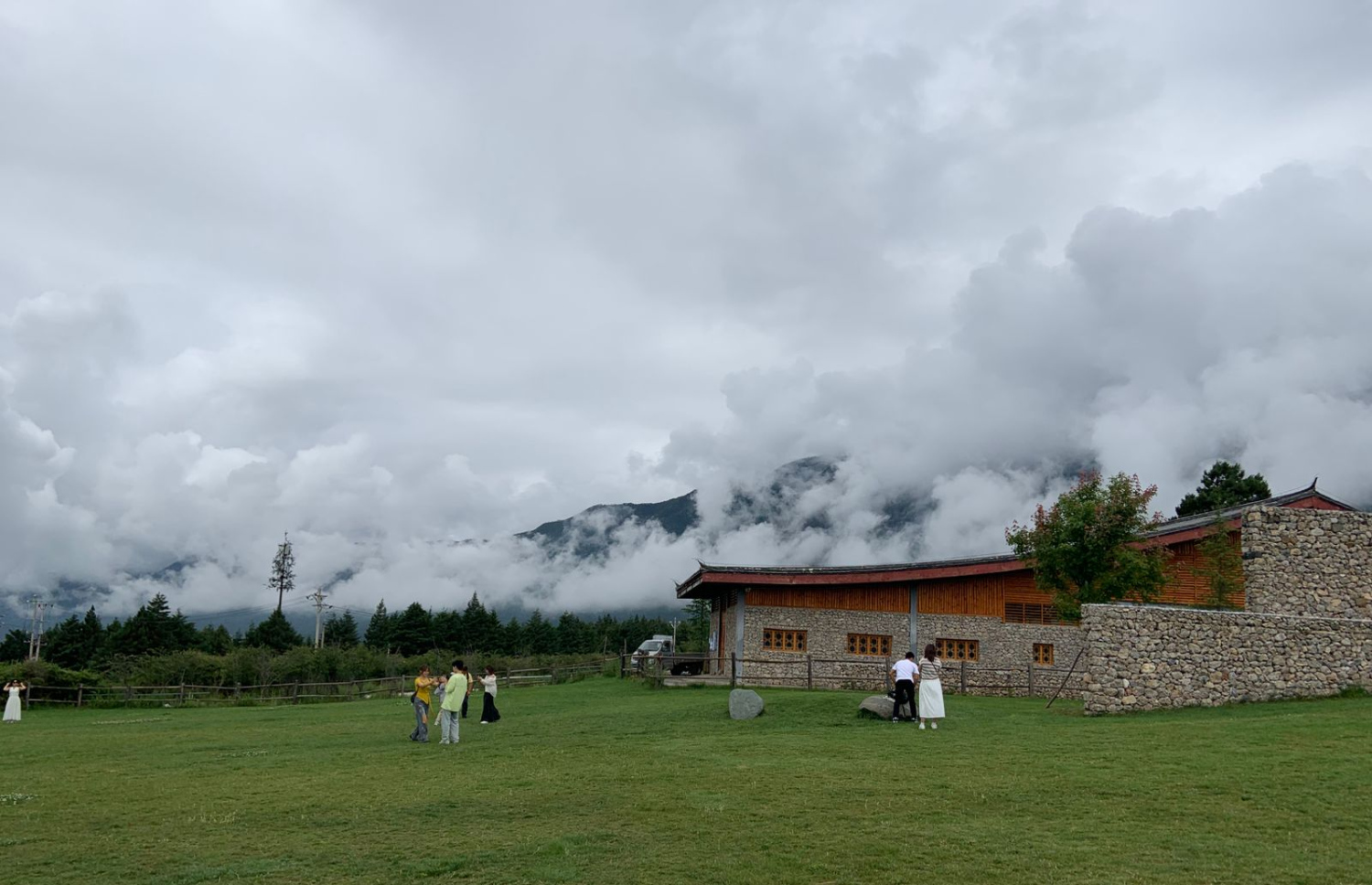
We walked into the Tourist Centre that took note of our arrival, and we were greeted by a dedicated guide to Yuhu Village, with a small population of just around 600 people. A shortbus picked us up and we were off to the village proper.
As we slowly made our way into this 1,000-year old village, we were greeted by houses built using volcanic stones from the mountains, carved and shaped by hand so that they may fit together and be strengthened as a whole.
We stopped in front of a house where we were greeted by a Naxi family, who greeted us with a traditional song and dance. Both the elderly and the young wore traditional Naxi attire, donning white, red, black, yellow, red and blue variations. We entered their humble abode, where greenery crawled across the stone walls. We were greeted with Pu’er tea and a look into their very own personal manual stone mill where they grind soybeans by hand and make soy for daily consumption.
The family’s grandmother was manning the mill, showing us how to grind the beans when she asked us to give it a go. Many struggled due to the heavy weight of the grinder, which only solidified the elderly lady’s strength. I gestured to her arms and flexed my own and she happily smiled and flexed her arm as well, understanding what I was trying to say about her strength.
Next, we were brought into their quarters, where an elderly man showed us how they tend to keep warm during the colder winter. They have what seemed to be a two foot long pipe with quite a wide mouth hole, and a little metal basin where they would put tobacco in. Smoking was viewed as a past-time that was also made to keep warm, along with a side of freshly brewed tea. Many from the team tried it, with some struggling to inhale through the large opening, some smoking it successfully, and one comically choking as well, lending a light-hearted chuckle in the moment.
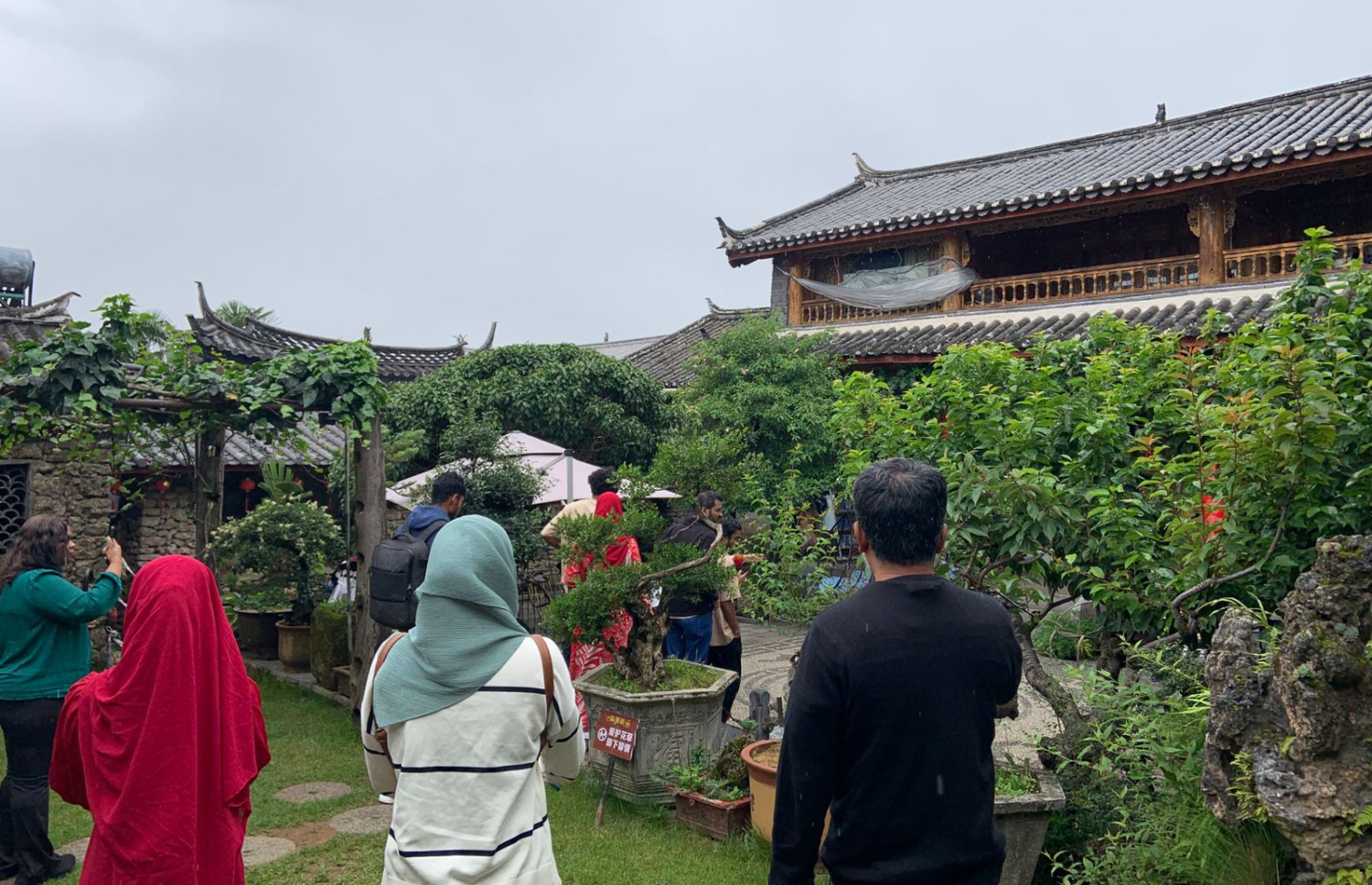
The elderly man went on to show us how they manually made paper, which was a precursor to an activity that was quite entertaining. He would take cellulose fibers and throw it in some water to soak. After a while he would put the fiber in a churning device where he would churn it by hand for a fixed time. Next, he would take the churned by-product and mold it onto a slate, just a tad longer than an A4 sized paper. After that was done, he would press the paper-thin mold onto a wooden wall, where it would be left to dry until it can be used to write on.
We were then brought into a classroom right next to their living quarters where we were taught characters of their pictography writings. A great many laughs were had as we learned a few key characters that were used in daily life of a Naxi individual.
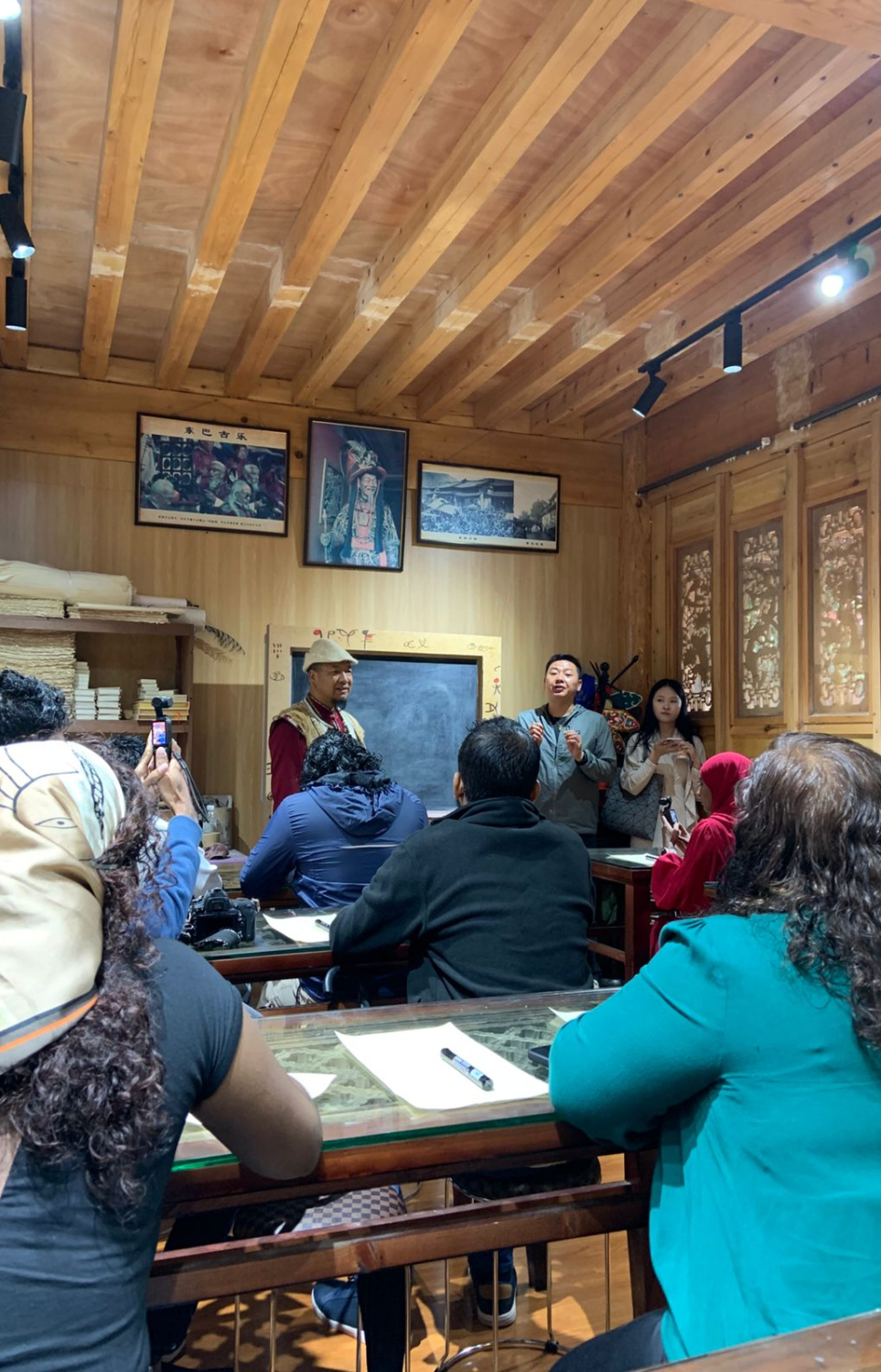
Afterwards, we were treated to some handmade soy where we were handed different ingredients such as various types of nuts, salt, spices, etc. They sang, we danced and enjoyed the life of a Naxi family for a short while before we departed to walk around the village and explore what it had to offer. Much like Lijiang Old Town, many shops lined the streets as well, selling locally made crafts and products. We soon arrived at a restaurant to have lunch and then took off to Baisha Ancient Town.
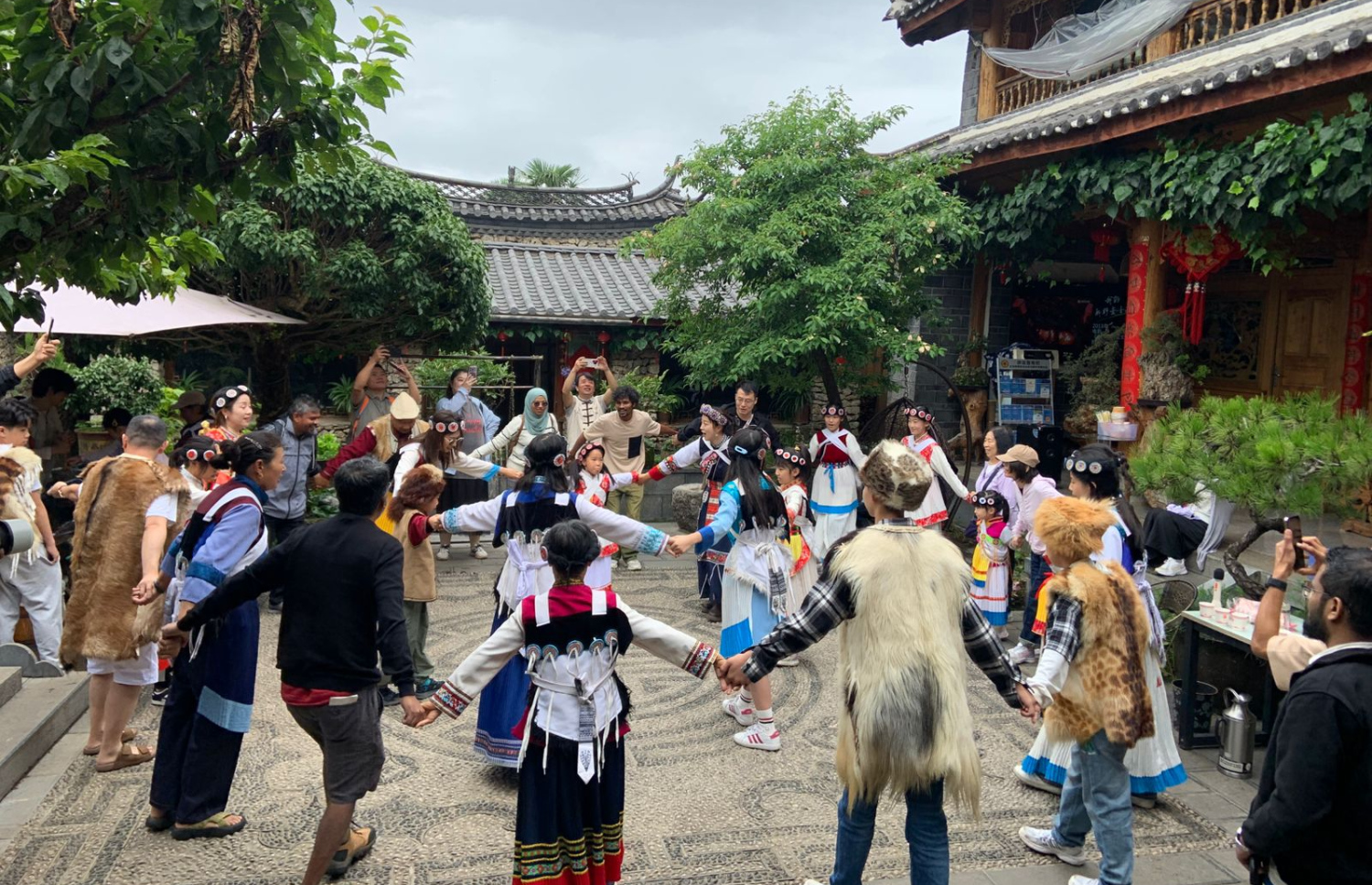
Baisha Ancient Town: A true blend of the past and present
We arrived in Baisha Ancient Town or Baisha Village after a short bus ride and were immediately taken through its stone-paved streets into the Baisha Embroidery Institute. It is a free vocational school that teaches the art of silk embroidery. Each piece is created in 7 days, with each piece going for 900 yuan, with 200 yuan going to the artist.
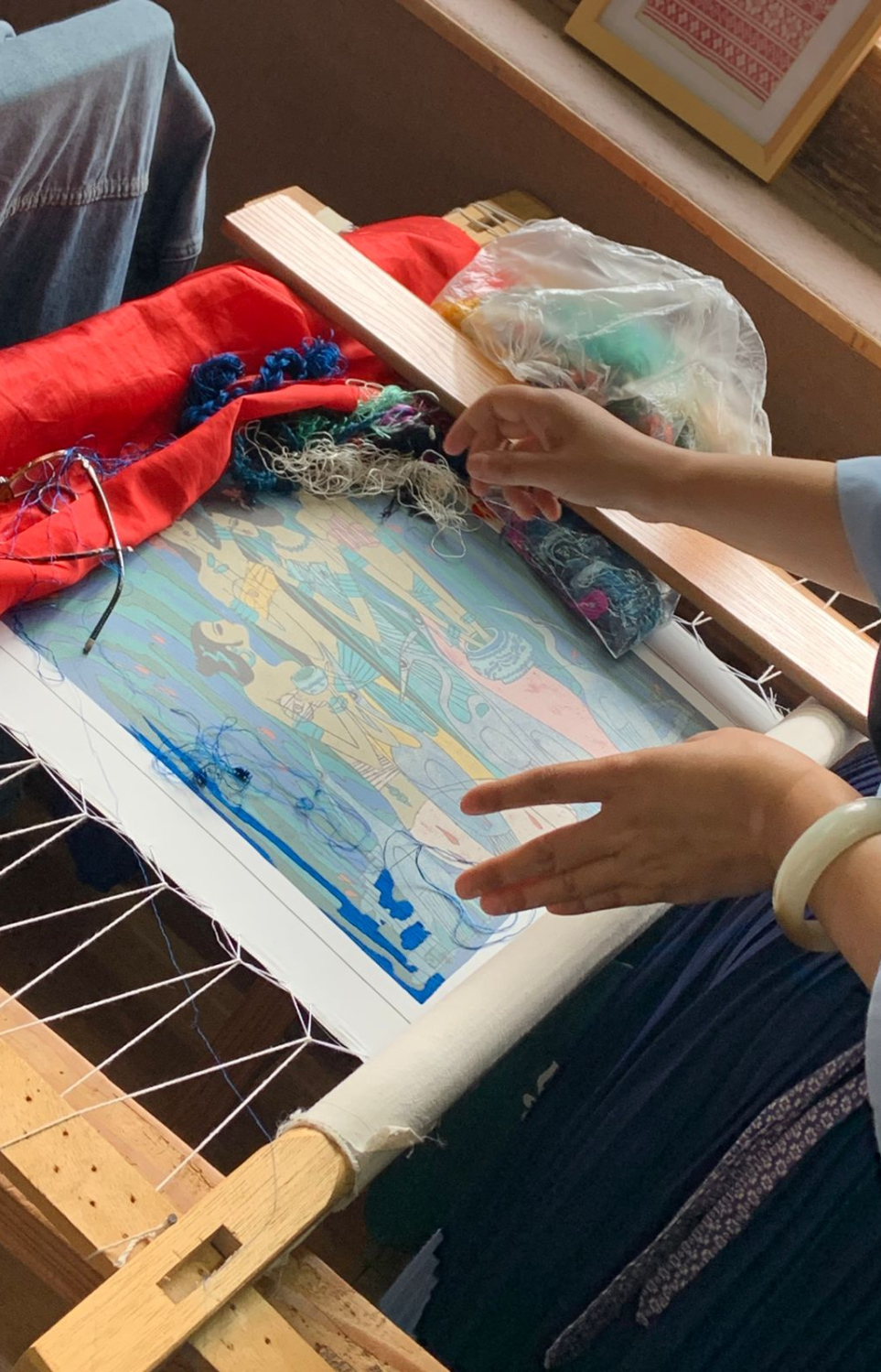
We were told that it is a practice that is slowly diminishing with time but it has its place for individuals who have the interest and who want to pick up a unique trade. The lady that was showing us around took us into their exhibit, where intricately crafted silk pieces both small and large took me by surprise. The excellent attention to detail and the beauty of each piece was awe inspiring.

The hard work, talent and dedication that would have gone into each piece is not only respectable, but should be celebrated.
Lijiang Jinshan Green Hydrogen Zero-Carbon Smart Factory
The Lijiang Jinshan Green Hydrogen Zero-Carbon Smart Factory focuses on the generation of green hydrogen and its usage in transportation. It’s located on the side of a mountain a bit higher up in altitude, with fantastical views of the valley below.
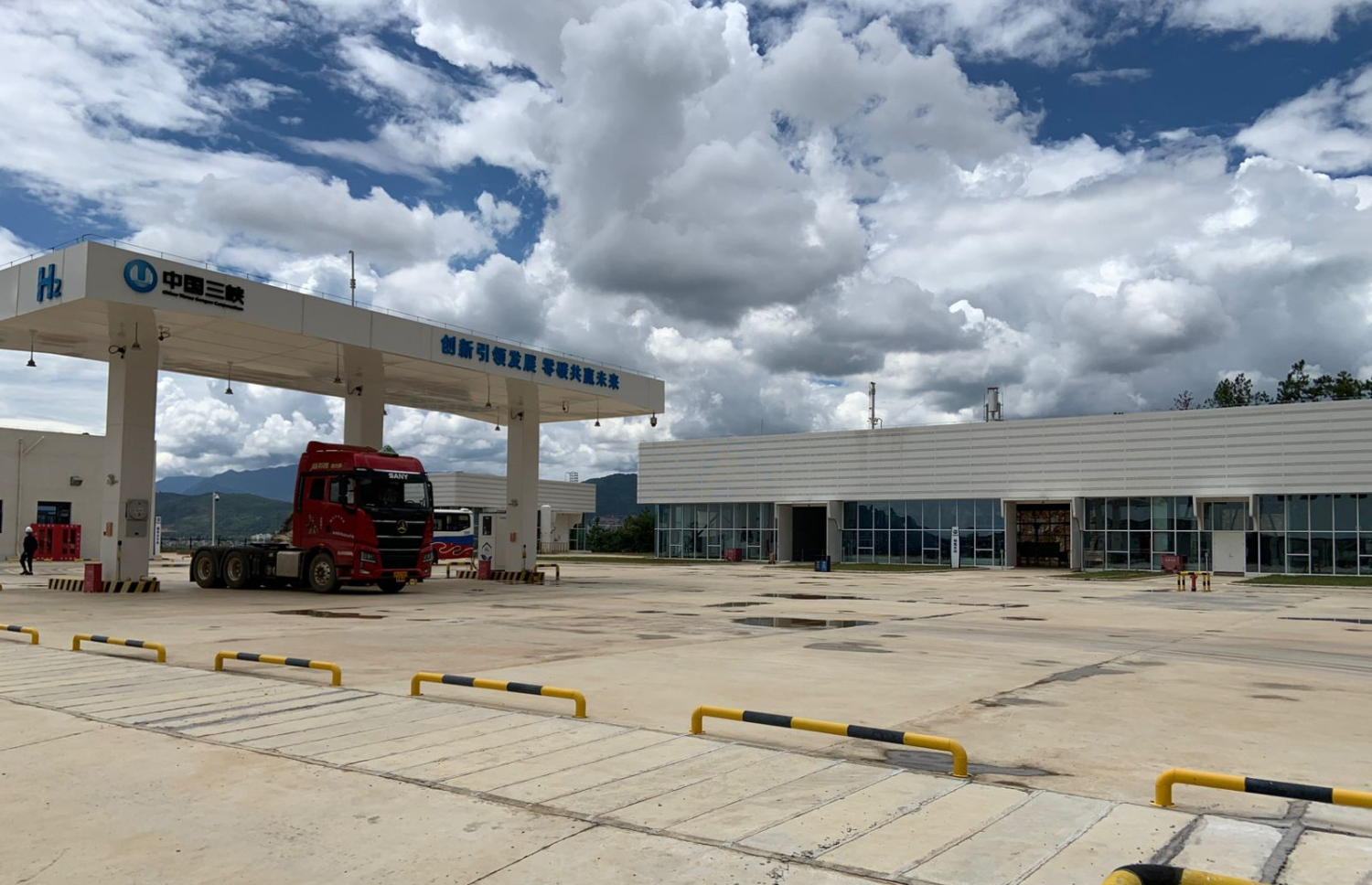
It generates 788 tonnes of green hydrogen a year using an alkaline water electrolysis hydrogen production device. The goal of the project is to establish a zero-carbon living circle, which includes a zero-carbon digital smart cultural tourism town, and to serve as a model for growing hydrogen energy applications. Lijiang’s buses utilize hydrogen for daily use and driving, which explains its quiet nature. The factory produces high-purity hydrogen, with a percentage of 99.999%. To further push the eco-friendly boundaries, the motorbikes used by citizens are EV, with a large number of EV cars on the streets as well. There were three buildings we were taken into, each featuring a different hydrogen production device for specific purposes. Highly technical and scientific processes were explained concerning the devices, of which I had only wished I could have recorded on my phone, which sadly had to be left in a locker due to safety reasons.
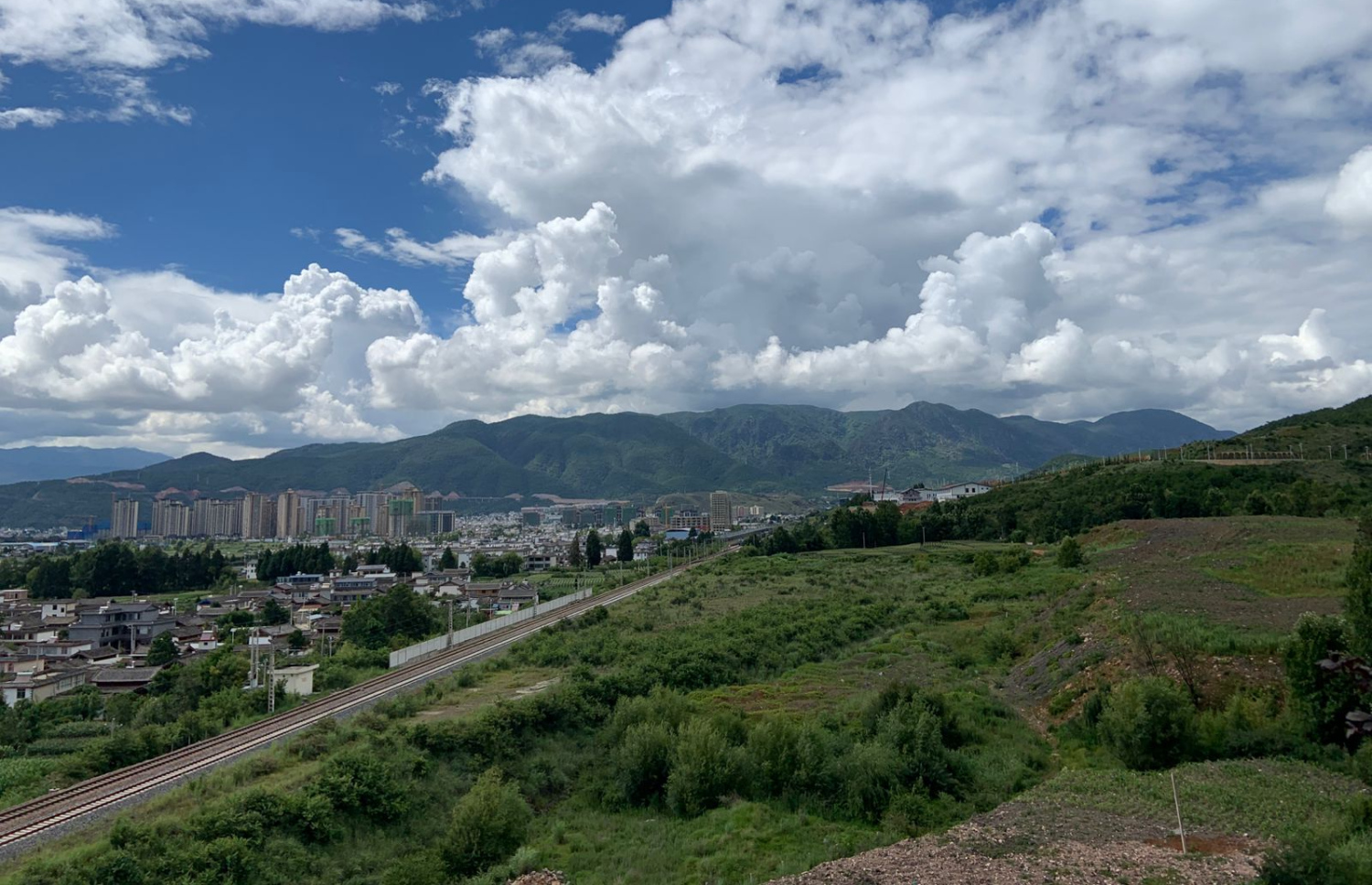
We wrapped up our tour of the factory and headed for a quick dinner, before me and my colleagues went to roam around town and discover what Lijiang had in store.
Kunming: The bustling heart of Yunnan
Day Three started with a bit of a rush, as we quickly had to have breakfast and rush to the train station to head back to Kunming. We had a meeting with Yunnan Daily to attend but before that, we went to the Table Tennis Summer Camp for Juniors from Maldives.
Table Tennis Summer Camp for Juniors from Maldives
After a 3 ½ train ride, a spectacular lunch and a short bus ride, we finally arrived at the Table Tennis Summer Camp for Juniors from Maldives. 10 Maldivian youths aged from 10 y/o to 15 y/o participated in the third rendition of the summer camp, which was held from 22nd July to 4th August. The training was described as being quite well-rounded, with their mental, physical and technical strength being tested and improved as time went on.
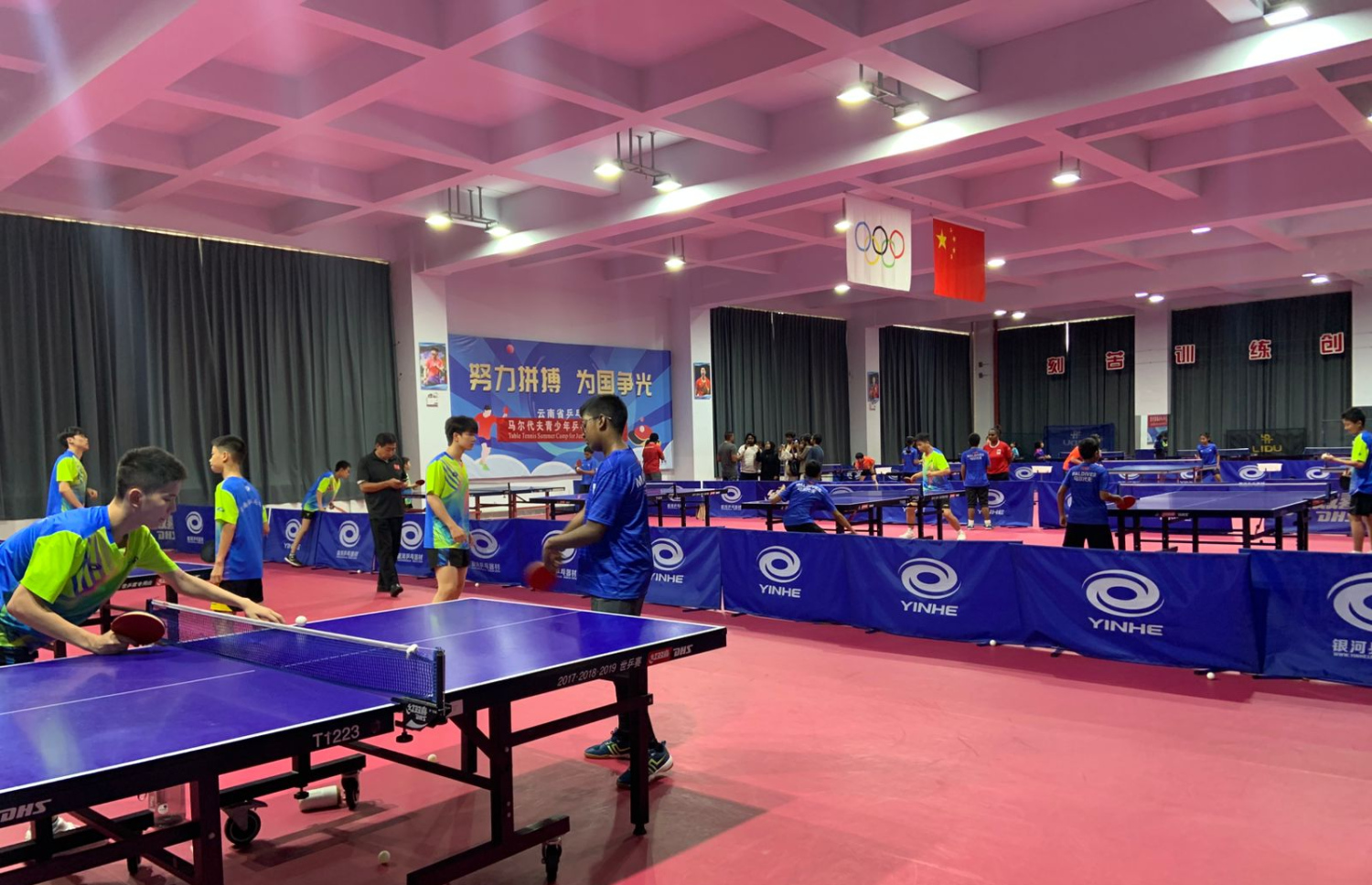
Athletes from both sides would conduct two training sessions daily, and it was a valuable experience on both sides as told to us by trainers at the camp. One Maldivian coach told us that the Maldivian players were to gain quite a lot of insights, as she had told us that the Chinese athletes are quite fast physically and in their decision making as well. She went on to say that the Maldivian athletes not only were adapting but were quickly picking up how to counter moves and were improving at a blistering pace. She said that both sides had learned quite a bit in the few days that had passed, and will continue to do so as the camp continues.
After conducting interviews and taking pictures, we left for Yunnan Daily in the heart of the city to have a discussion with the Yunnan International Communication Center for South and Southeast Asia.
Yunnan Daily
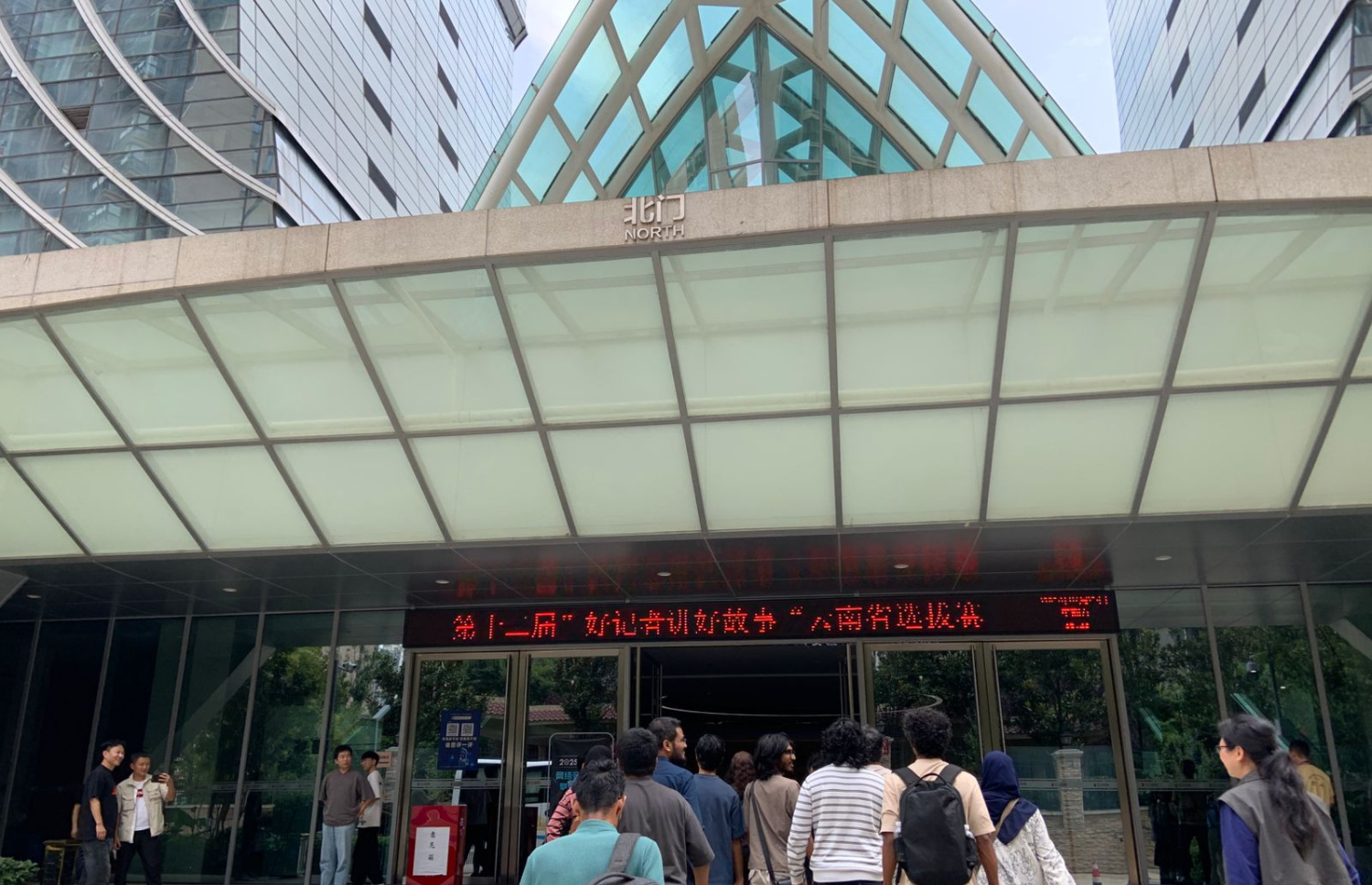
We were greeted at their grand building by high ranking officials Mr. Zhang and Ms. Serena, who had excitedly told us that they had recently celebrated the 75th anniversary of the paper, and then subsequently invited us up to their office quarters.
We were given a tour of the office by their resident journalist Mr. Jerry, a well-spoken individual and Ms. Serena, who went on to tell us that the paper has four magazines spanning multiple languages such as Thai, Laos, Cambodian, Chinese, English, Vietnamese, Burmese, etc. Yunnan China is one of their journals along with South and Southeast Asia Club and a few others as well.
They have worked closely with Myanmar, China Daily, India and more. He showed us posters and news pieces they had worked on such as Yoga Day, the China-Laos Railway, with the paper sending one of their journalists to Myanmar to document the 7.9 magnitude earthquake that struck the country at the tail end of March.
Mr. Jerry and Ms. Serena went on to show us their souvenir room which had cultural products from various organizations they had worked with. The tour concluded with this showing, where we were taken to a 40-minute meeting with executive members of the paper. We discussed China-Maldives relations, how we can strengthen our relationship with various media and what we can do in tandem to showcase China to Maldives in all its glory and how China can also showcase Maldives in its full splendor as well. Video ideas of food, song & dance and cultural aspects were exchanged.
Dianchi Lake in Haigeng Dam
After a discussion that talked about Chinese media, Maldivian media and how we can move forward cohesively in the future, we were taken to quite a relaxing venue known as the Dianchi Lake in Haigeng Dam. An extremely long stretch of road was laid out in front of me, seemingly going on forever with the lake and the mountains as a backdrop.
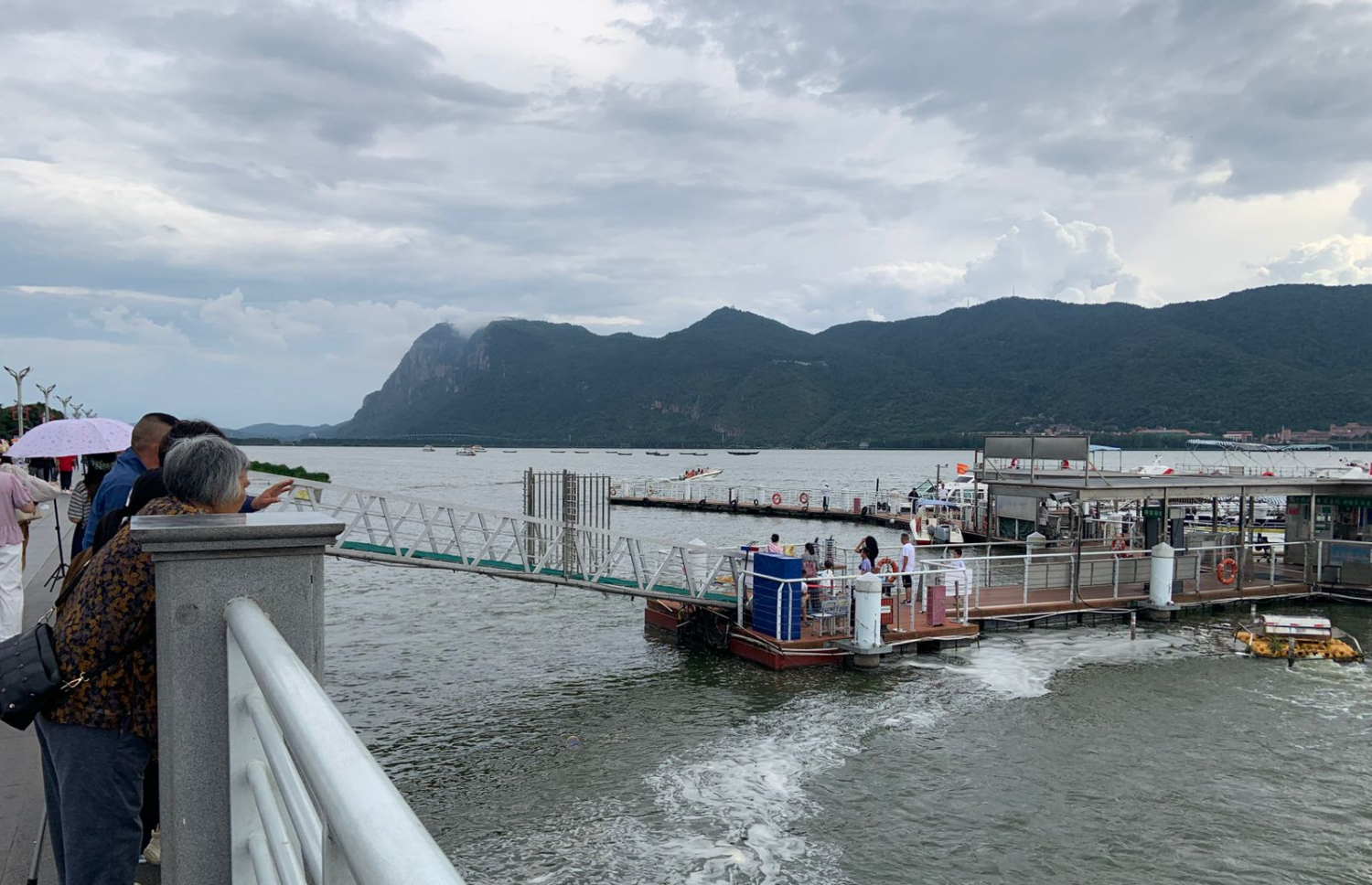
A short 45 minutes later, we were taken to dinner and then to Wyndham Grand Plaza Royale, a magnificent 5-star hotel where we’d spend our last night in Yunnan. We checked in and went out to explore the city before calling it a night.
Jinning County, Modern Flower Industry Demonstration Park
Day Four rolled around, with this being the final day of our trip. We had breakfast at the hotel and were taken to Jinning County, where we rode to the Modern Flower Industry Demonstration Park.
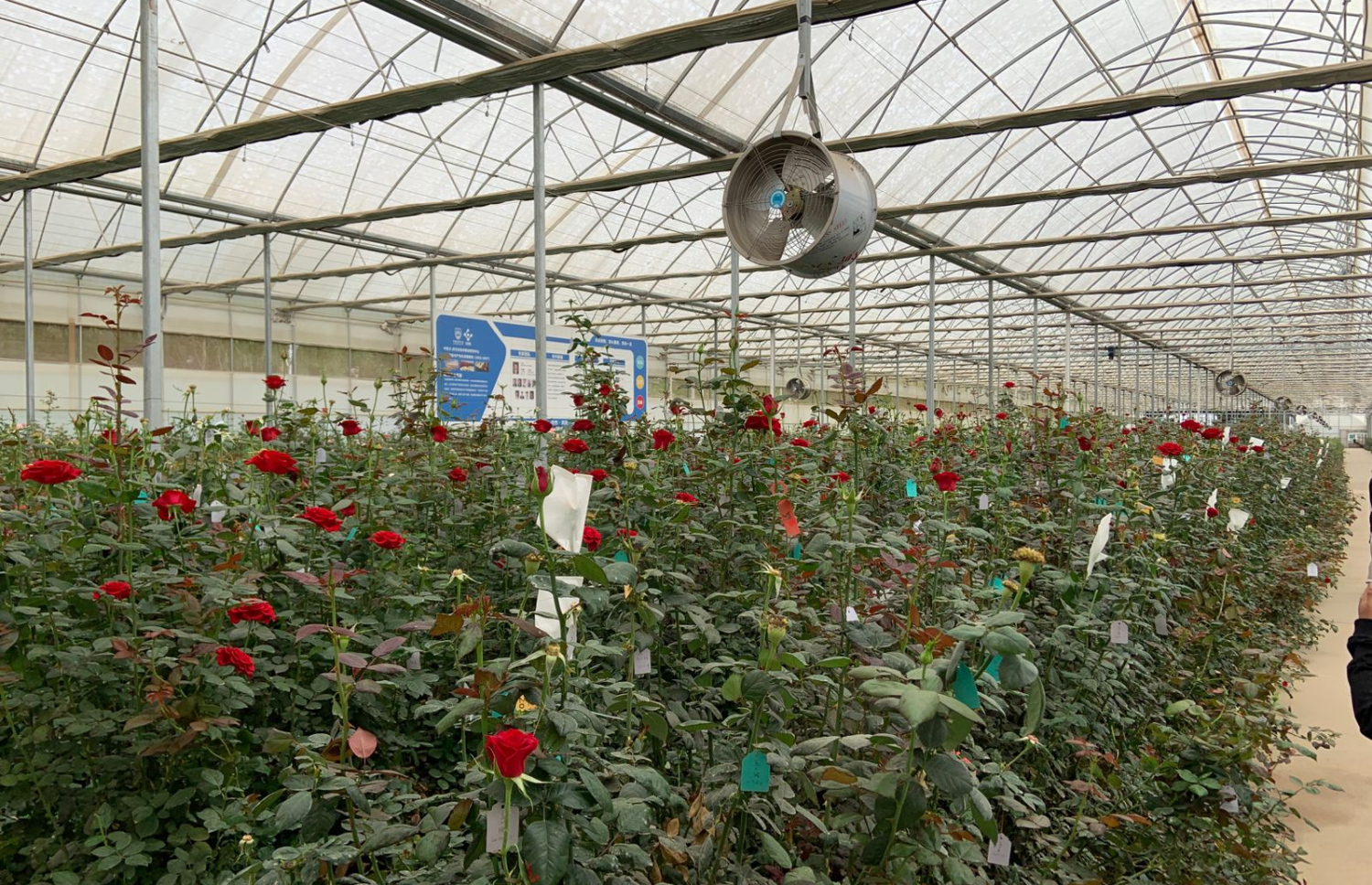
A vast plot of land that had 10 greenhouses that grew flowers, the Demonstration Park was a thing of true beauty. Roses stretched beyond my peripherals, with various other flowers being grown there as well.
Construction of the Demonstration Park started in 2020 and has grown to be quite a large operation in the last five years. 30,000 to 50,000 stems are sent to Maldives every week and sold to locals, bearing a smell just as sweet as the day it left Yunnan. Most flower species are brought from the Netherlands, with one type being patented by the flower park. There are 900 employees that work there , who are also farmers from neighboring areas, providing employment to these hard working individuals.
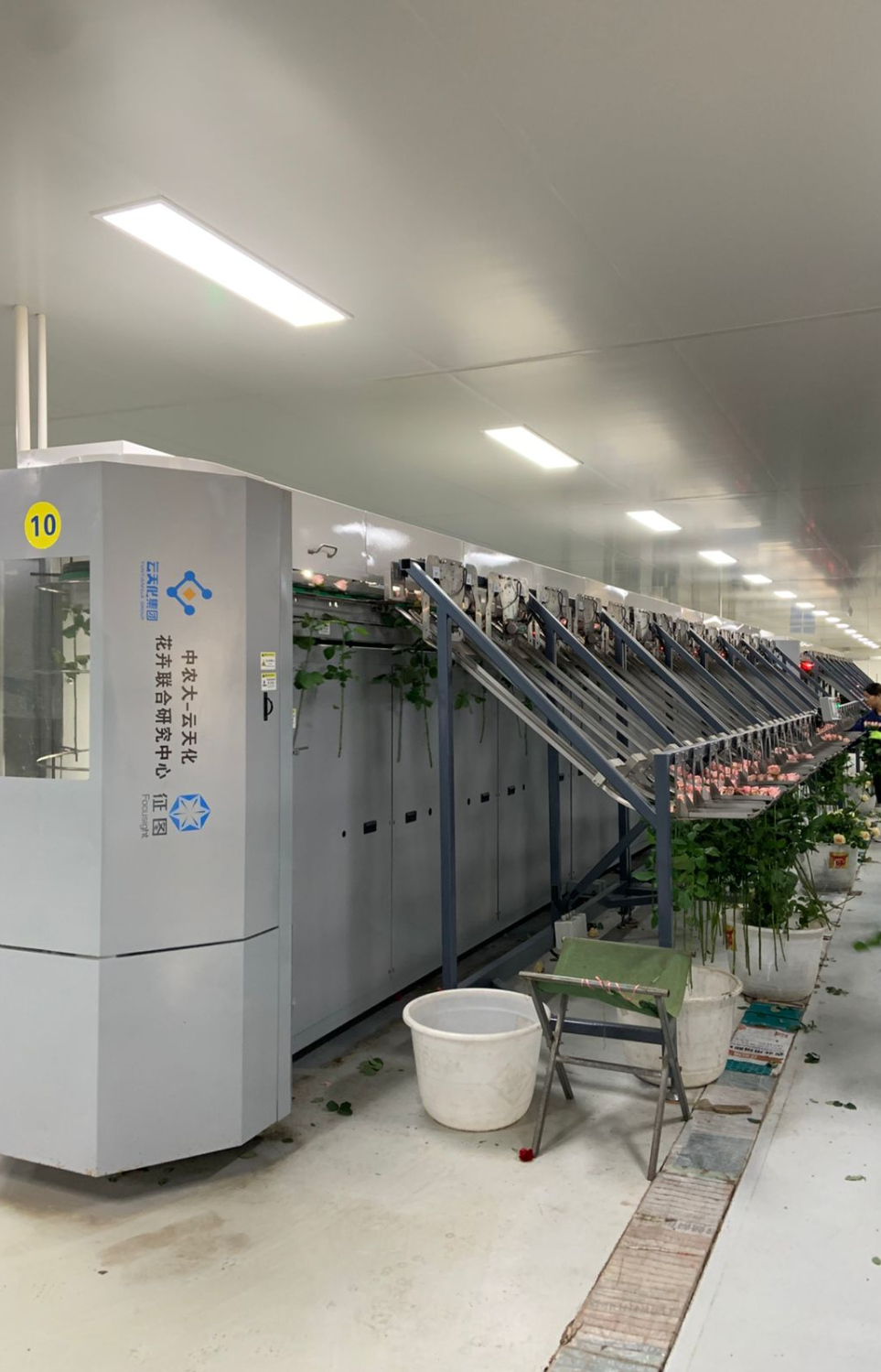
Flowers are sent through two machines which are overlooked by employees to ensure high quality stems are chosen. The first machine sends the stems to the employees, with the second machine tying up the hand picked stems and putting them on a conveyor belt.
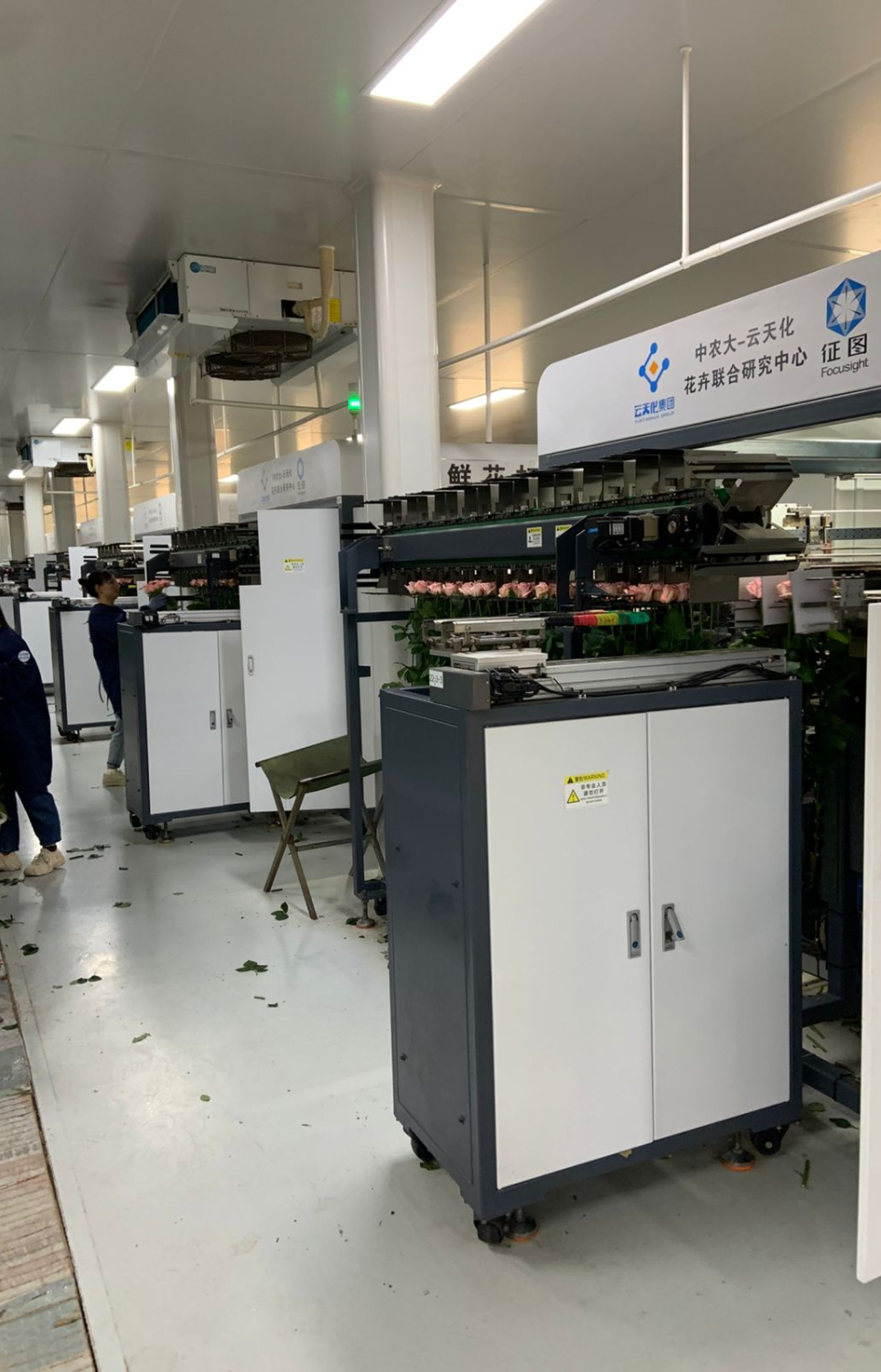
They then reach another set of employees who will conduct a final check of the stems, before being stored in 3 degree rooms to be kept fresh. Bouquets were set on vertical trolleys, ready and prepped to be transported to nearby stores, as fresh as can be.
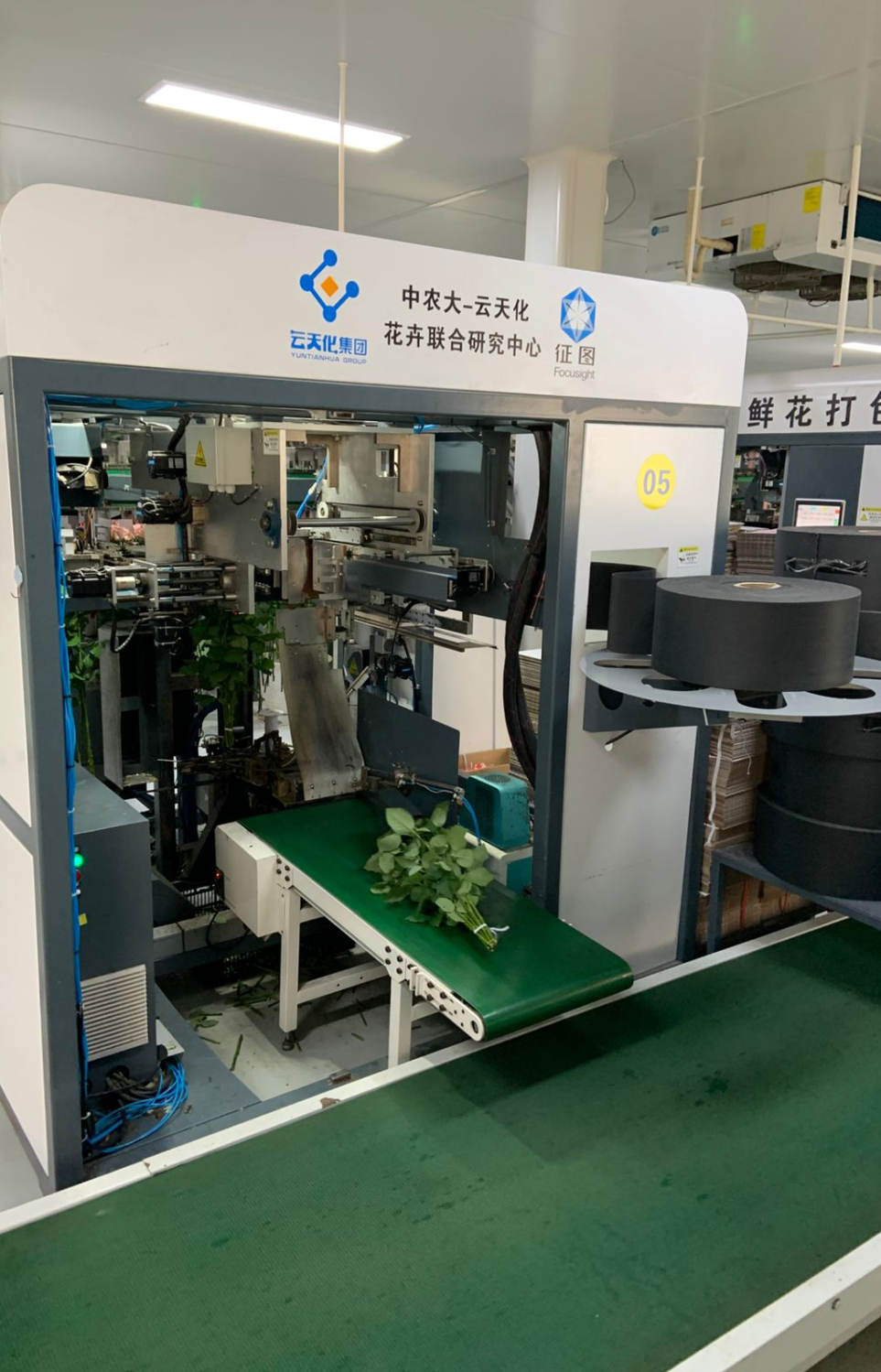
The visit ended with a group photo before we departed for a final lunch. We ate, we laughed and then we stepped onto the bus to head to the airport, as we had already checked out of the unforgettable hotel before we drove to the Modern Flower Industry Demonstration Park.
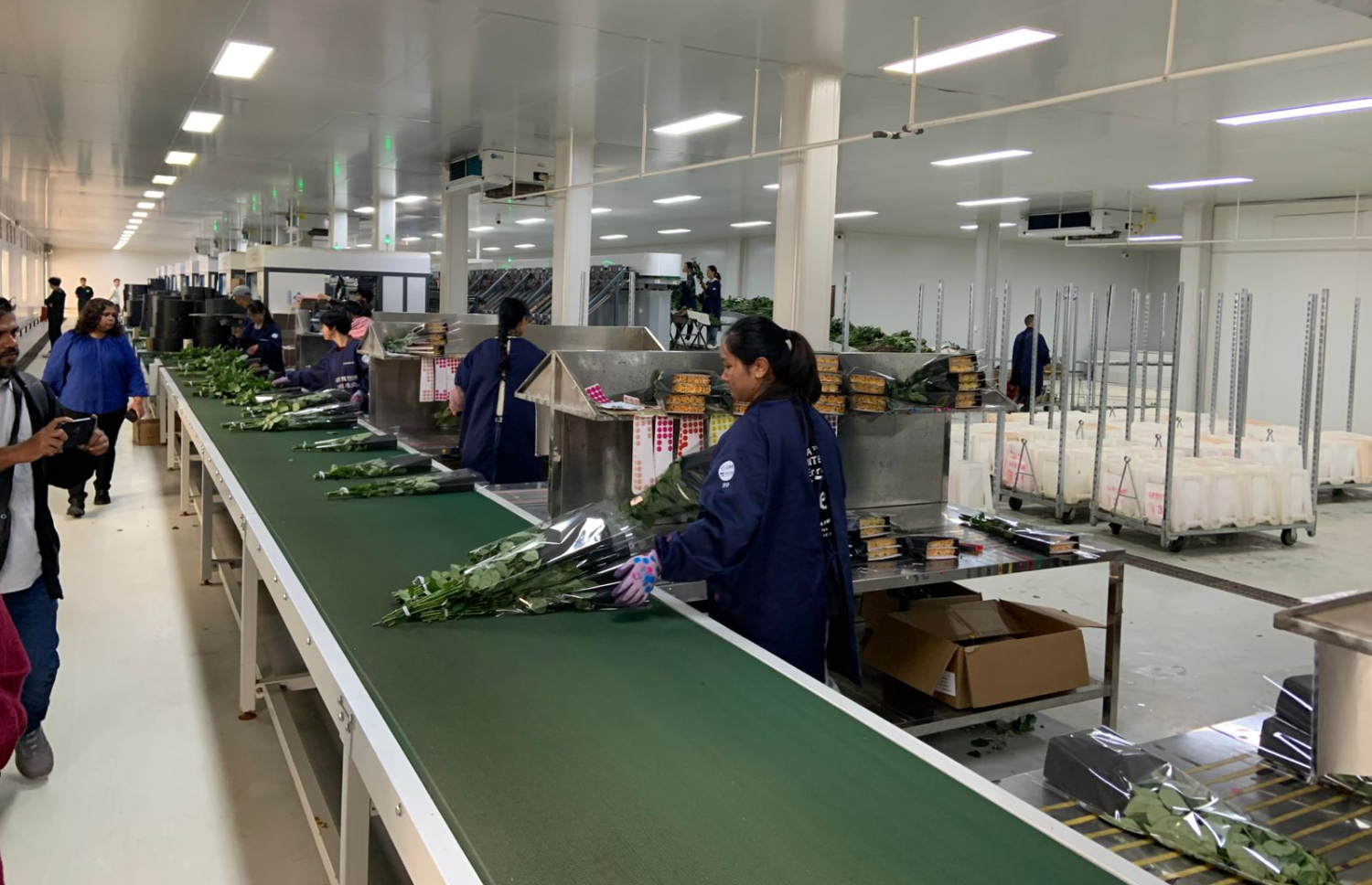
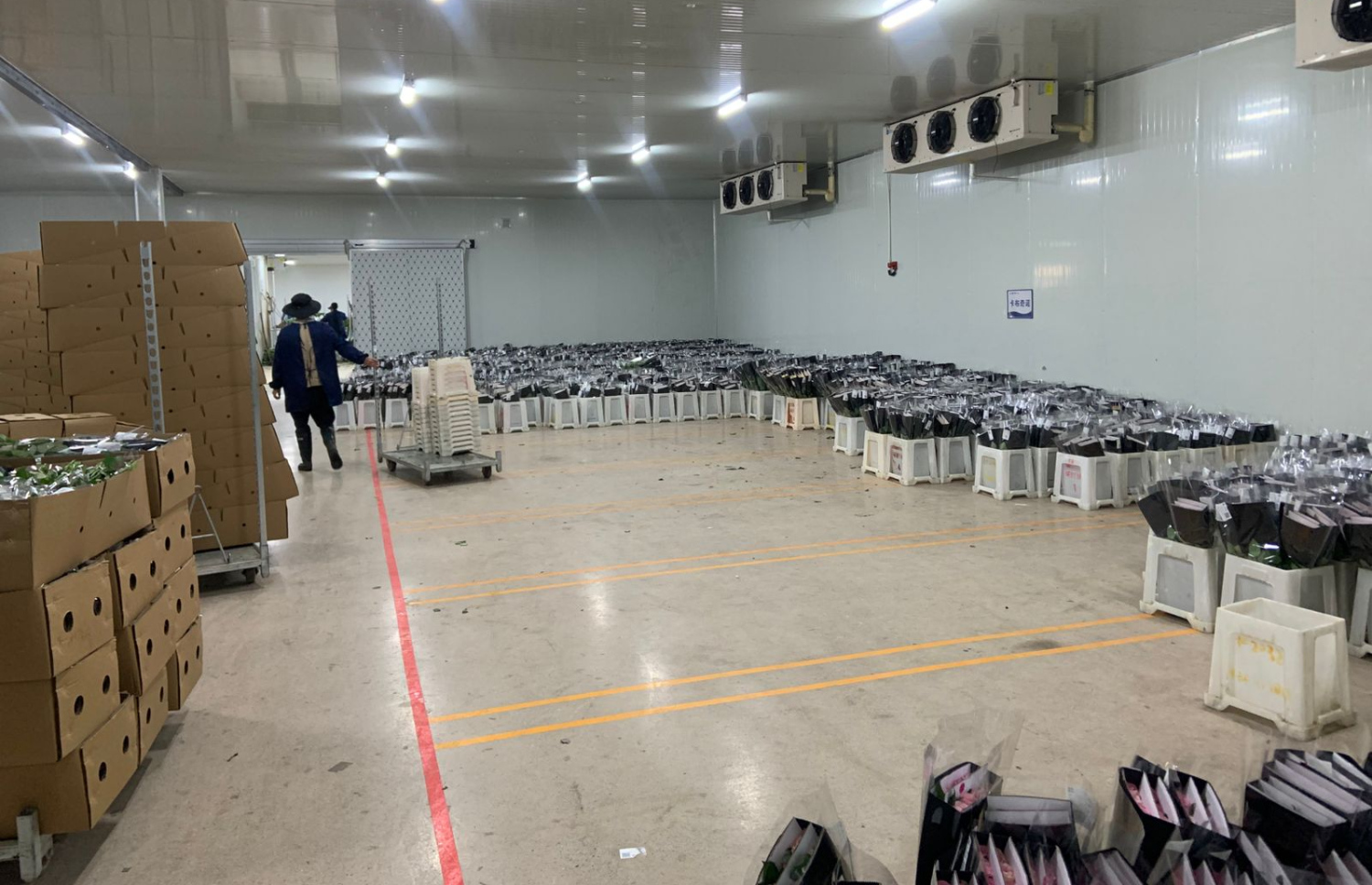
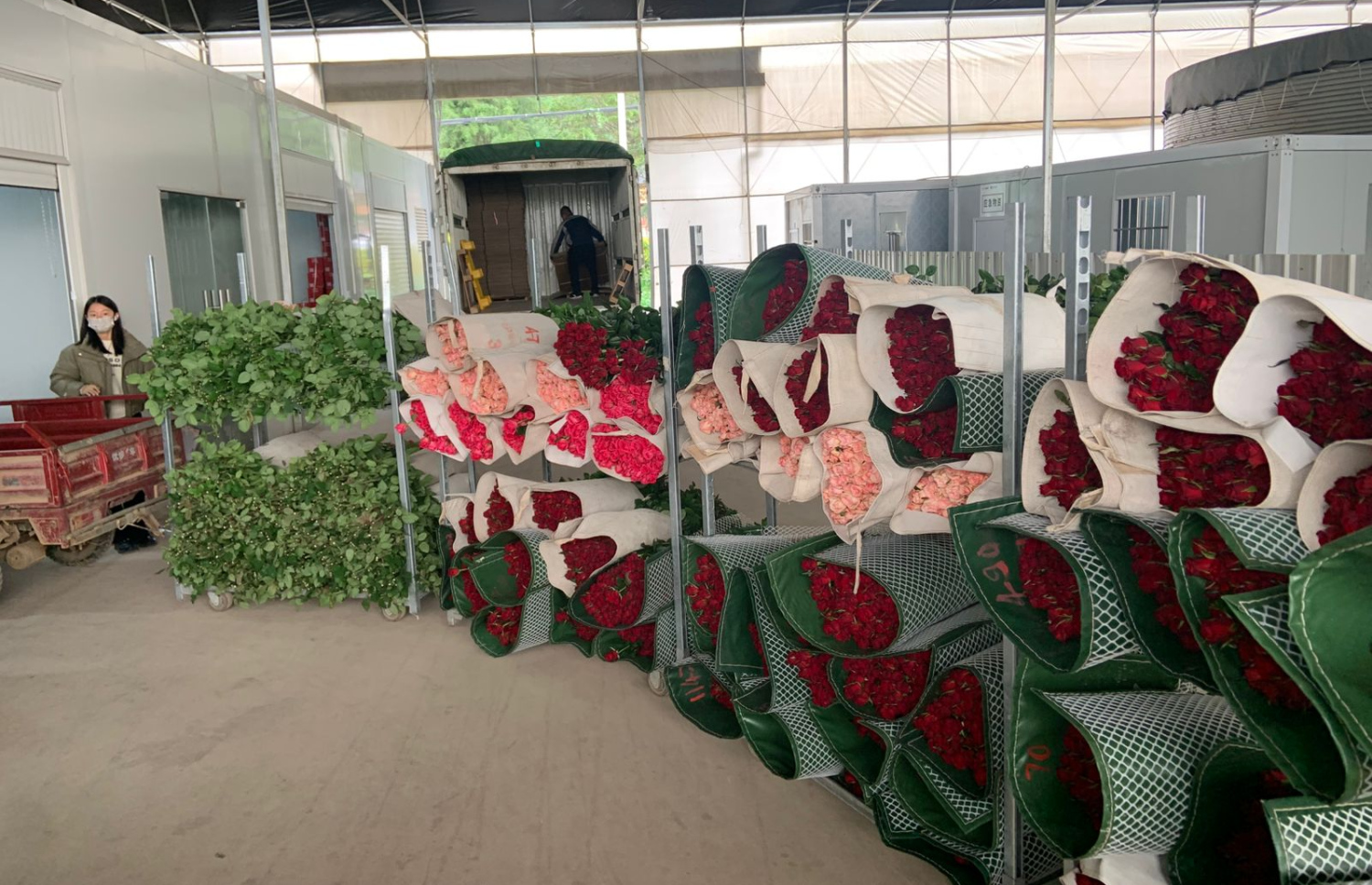
An unforgettable journey, Yunnan was littered with fresh experiences that I will cherish until the later years of my life, and I only wish that we were there longer, just so I could have taken an even more detailed account of my experience there.
But as we were only there for four days, our time was limited and we had to hurry from place to place. However, it was still a 10 out of 10 experience and I can only recommend to readers that they go to Yunnan to see what it’s all about.